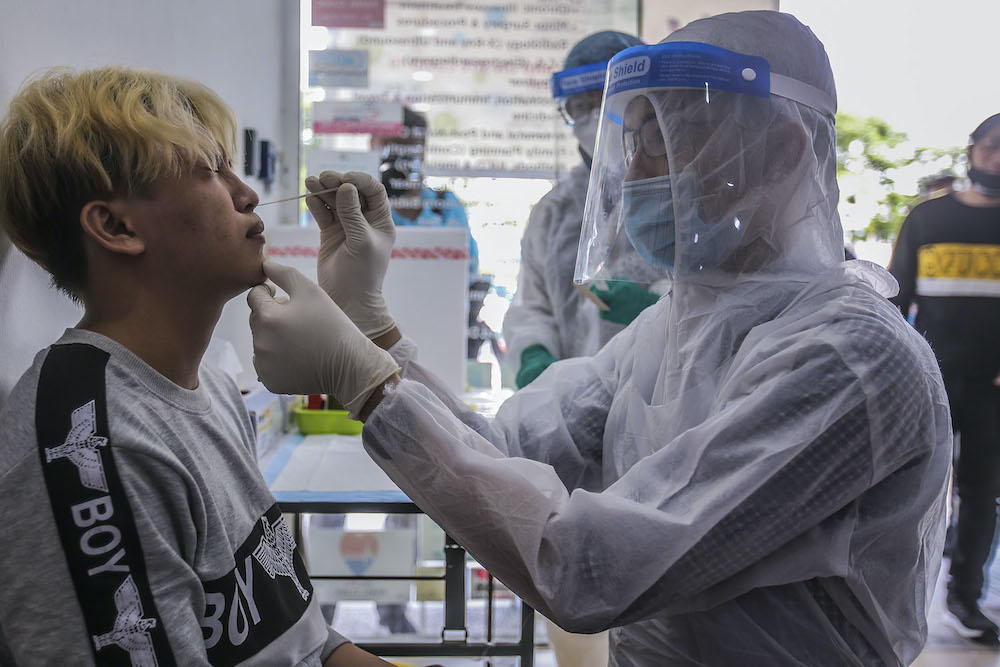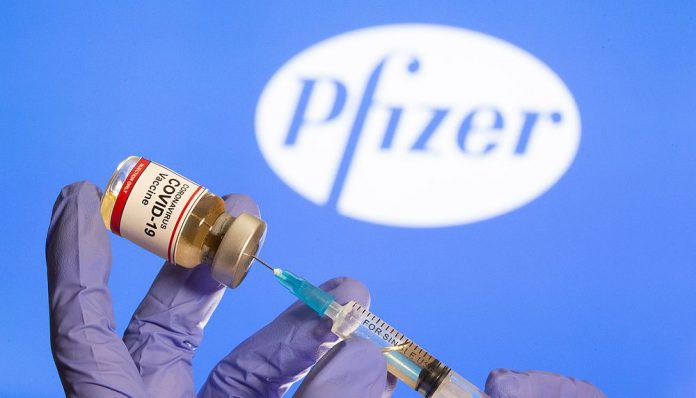
KUALA LUMPUR, Nov 30 — The government’s announcement that it had successfully secured 12.8 million doses of Pfizer-BioNTech Covid-19’s vaccine and a spot in the Covax Facility is definitely a good start in efforts to get back to normal life, healthcare experts said.
They cautioned, however, that this does not mean Malaysians should drop their guard and give up current preventive measures like wearing face masks and practising good personal hygiene, as these deals are not a cure-all.
Marathon, not a sprint
“If the vaccines really go into production for worldwide use, it will be an important step to slowing the pandemic but it is not the silver bullet.
“Measures like face masks, physical distancing and personal hygiene will still be very important, with or without a vaccine.
“These are tested measures, so they shouldn’t be abandoned overnight,” said Malaysia Medical Gazette managing editor Dr Khoo Yoong Khean.
He added that although Pfizer’s preliminary data looks good, Malaysia will have to wait for data from the final phase three trial to properly assess it.
“For Covax, we still do not know which vaccine or how they will be distributed but the core principle of Covax is to ensure equitable distribution, so this bodes well, especially for marginalised communities,” Dr Khoo told Malay Mail when contacted.
Dr Khoo, who is a medical practitioner trained in primary, tertiary and emergency healthcare in various clinical specialties, however stressed that there may be short supply of the vaccine at the initial stage, and the government will need to decide who to prioritise based on risk assessment.
“It is my hope that we don’t forget the marginalised communities in this model, for example the bottom 40 population, migrant workers, refugees and prisoners as they are arguably under the high-risk population as well,” he said.
“As for the rest of the population, we will have to wait as the supply slowly grows.
“So yes, I assume many things will be the same for the general population.
“As more data comes in, then we will need to reassess and adjust if needed,” he said.

SOP, SOP, SOP
Sharing a similar view is consultant respiratory physician and co-founder of Asthma Malaysia, Dr Helmy Haja Mydin, who described the availability of a Covid-19 vaccine as a silver lining for a 2020 that has been beleaguered by bad news.
“The fact that it will be made available in Malaysia is a testament to the efforts that have been put in place for vaccine diplomacy; thus ensuring that Malaysians receive the vaccines in a timely fashion,” he said when contacted.
However, he too is of the opinion that the situation will not change drastically in the first instance.
“The importance of wearing face masks, staying away from confined, crowded and congested areas as well as washing hands will not change.
“However, we may see an increase in consumer confidence and sentiment, which will help open up various sectors of the economy that have been bearish for too long,” he said.
Protect the vulnerable and the essential
As for Azrul Mohd Khalid of Galen Centre for Health and Social Policy, he said the vaccine will provide adequate coverage for those working in essential public services, such as in the health, law enforcement, sanitation and utility sectors.
It will also protect those categorised as vulnerable such as the elderly and people living with non-communicable diseases like cancer and chronic kidney disease, he added.
“Access for the remaining population will be dependent on either increased procurement of one or both of these two vaccines, or from other bilateral arrangements with other pharmaceutical manufacturers such as those from China, Japan or the US,” he said.
When asked to comment on the outlook for 2021, Azrul said it is imperative to have at least one vaccine available by the middle of next year, with the aim of containing the Covid-19 epidemic, without having to resort to restrictive measures such as lockdowns.
“We are likely to not see much change early on in the epidemic.
“People will still get infected, SOPs will still need to be followed, and precautions must still remain in place to prevent our healthcare system from being overwhelmed.
“The first half of 2021 may look similar to the end of 2020,” he said when contacted.

How herd immunity works
When Science, Technology and Innovation Minister Khairy Jamaluddin announced Malaysia’s participation in the Covax Facility, he mentioned the dependency on those who may not receive the Covid-19 vaccine, for example, children.
So what this means is vaccinating a certain amount of people in a population until there is community protection vis-a-vis those who cannot be vaccinated (for various reasons like age, health).
“For example, if you vaccinate 90 per cent of a population, the disease becomes so rare in the community that the 10 per cent won’t get it anymore,” said Dr Khoo.
But the case of Covid-19, he said, may prove slightly trickier.
“The 70 per cent coverage we read is an estimate based on the herd immunity formula — 1 — 1/R0 (R-naught) shows if your R0 is low, your needed herd immunity coverage is low.
“The 70 per cent coverage is basically with a R0 of 3.5, which is a fair estimate based on evidence we see of the disease spread (pre-lockdown).
“So if we can bring the R0 down, using methods like face masks, physical distancing, the needed coverage will be lower,” he said.
Dr Khoo added that a higher efficacy vaccine will also mean coverage can be lower.
However, he said there are still some uncertainties, like do we rely on the vaccine and open up the economy similar to the pre-Covid-19 climate?
“Or wait and see, continuing strategies that we use now like lockdowns and etc.
“What about susceptibility of different populations getting infected? All this will affect the true herd immunity effect,” he said.
Overall, he sees it as a bit premature to talk about herd immunity and its potential coverage.
He instead suggested a more concerted effort is made to protect those deemed as high risk and vulnerable.
“These are more tangible targets in the short term when we get the vaccine.
“In time, as we see the efficiency of these vaccines in the real world, then we can think about herd immunity,” he said.
Azrul also said since Malaysia is initially looking at around 30 per cent of its population being vaccinated under these two vaccines and possibly others, it will probably take at least three years of vaccine mobilisation efforts in the community before any benefits from population immunity can be seen.
He also raised the question of whether securing the Pfizer-BioNTech Covid-19 vaccine will have any implications for ongoing Budget 2021 discussions.
Acknowledging this as a boost of confidence for the coming year, Azrul said in a marathon, this is only the first leg of the race.
Logistical concerns
He also raised concerns about the logistical burden that will be shouldered by the Ministry of Health.
“This vaccine requires ultra-cold storage of negative 70 degrees Celsius, a capacity which is beyond most existing primary care healthcare facilities.
“Therefore, the reliance will be on the availability of suitable storage units at the state level to ensure that the vaccine’s cold-chain is not interrupted.
“We expect the most challenging part of the process will be the delivery of the vaccine to rural areas,” he said.
He also urged the government to review Budget 2021 allocations, especially taking into account Covid-19-related areas.
“It involves more than just the cost of the vaccine but also the supporting infrastructure.
“We need to ensure that the Ministry of Health gets the necessary funds and manpower needed to hit the ground running when the vaccine becomes available in 2021.
“Especially since this vaccine has specific logistical and storage requirements which will require investing in required infrastructure and training.
“Are we going to acquire Pfizer’s special ice boxes? Have we allocated for the record-keeping system that will be needed?” he asked.


